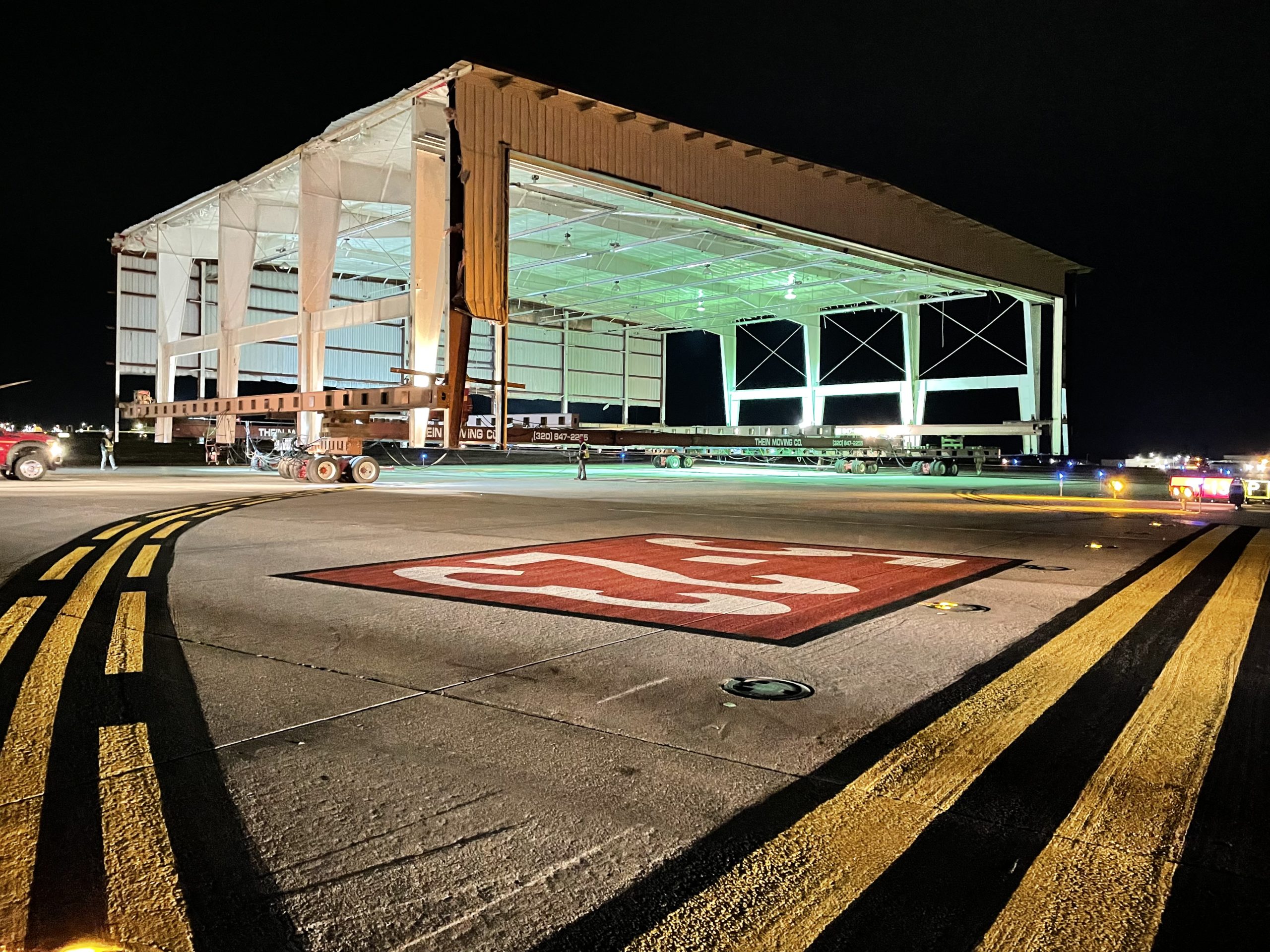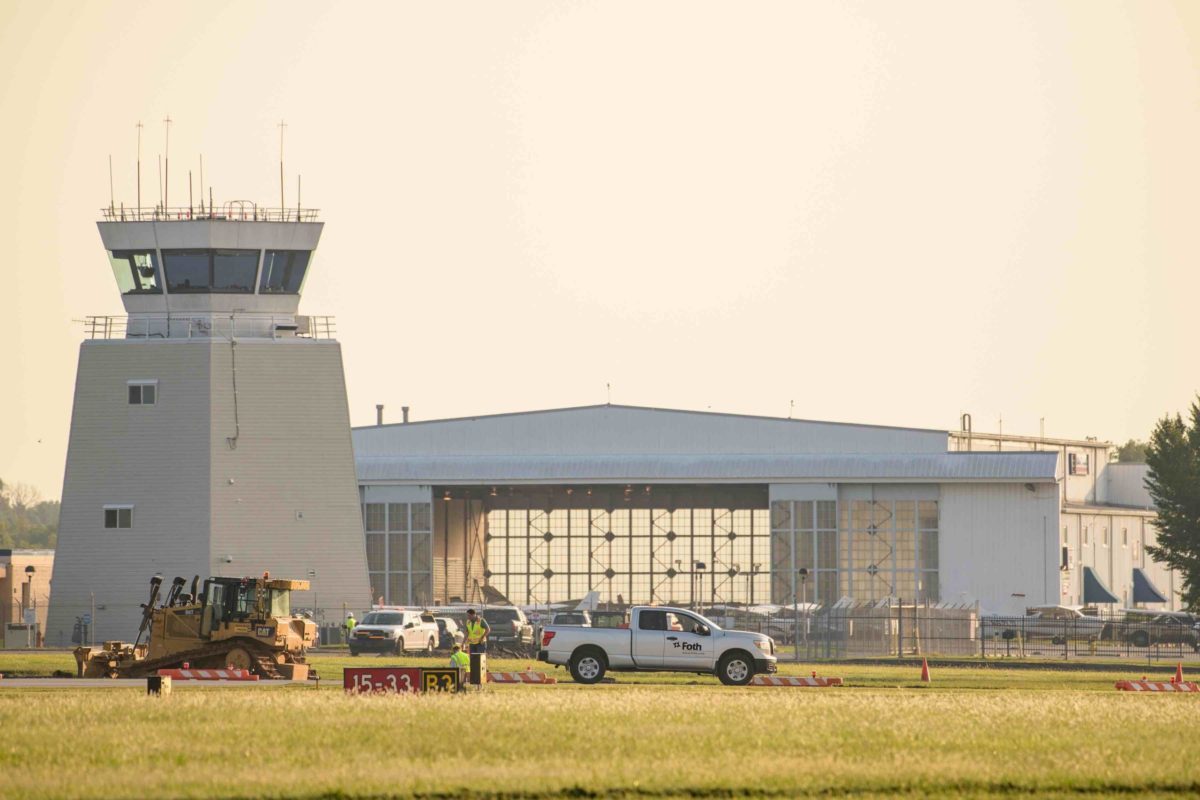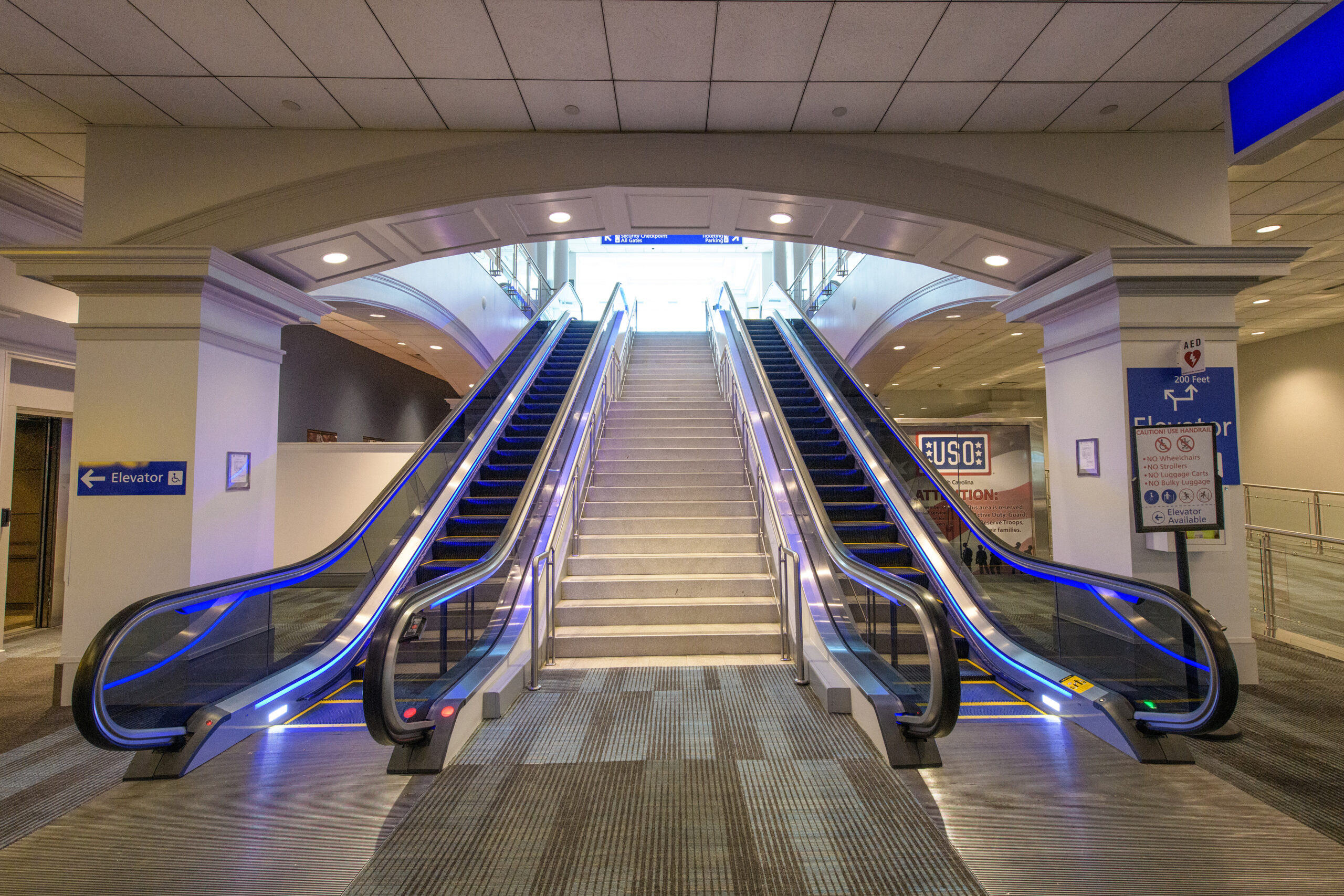
Anyone who has spent time around airport operations knows one simple truth: there’s little extra cash in the operating budget. Like so many others, Columbia Metropolitan Airport (CAE) in South Carolina found itself in this predicament, but with a little strategic planning and the right equipment, CAE was able to shave $1.2 million per year off its budget.
CAE’s process started by identifying aging infrastructure components in need of replacement and upgrades. By focusing on sustainability and energy savings, developing a multiyear plan, and phasing the process correctly, CAE upgraded these components to the benefit of its stakeholders and pocketbook.
Curbing Costs: A Driver for Change
CAE’s journey started in 2009, with upward-trending energy costs. These costs continued their upswing through 2016, eventually reaching $1.2 million per year. Seasonal shifts in cost were wide, fluctuating from $90,000 to $120,000 per month. The airport’s 2012 master plan had identified obsolete mechanical, electrical, and lighting systems as items for replacement; it was becoming increasingly apparent that it was time to act on those recommendations.
Projects identified by the master plan included heat exchange system upgrades with replacements of handlers and chillers, along with improvements to interior and exterior lighting systems. Escalators were also earmarked for replacement, as they presented both cost and safety concerns.
A multiyear, multiphase replacement plan was developed based on operational and budgetary constraints. Operational concerns focused on the best method for keeping these heavily relied upon systems running until they could be replaced—without paying for pricey repairs. Because the majority of the equipment in need of replacement was in passenger areas, an added challenge was staging the work such that it did not negatively impact the passenger experience. Safety, convenience, and comfort were key in developing this staging.
Budgetary constraints for CAE were similar to those at any airport: finding money in the operational budget to make upgrades after necessary preventive and maintenance work was done. This required careful consideration of which systems were the most energetically expensive and had the highest maintenance bills. Addressing those systems first subsequently freed up budget for other work.
While all of this made for sound planning, it was essential to ensure the overall schedule was adaptable. In the event that a system failed sooner than anticipated or failed during a critical time or season of the year, CAE needed to have the flexibility to shift the order of priorities quickly, without added expense.
Phase One: Mechanical Systems
The first phase of improvements began in 2016 and addressed the existing mechanical system. Originally installed in 1996, the existing system had surpassed its estimated useful life of 15 years. It relied on four cooling towers and four chillers that cooled water to 55 degrees. The new system is split between two central plants, Concourse and Terminal. It also includes additional thermal storage, which was constructed in the concourse.
Water chillers are notoriously high maintenance at the end of their useful life. CAE elected to replace one of the terminal chillers with a glycol system, both eliminating increased maintenance costs and improving efficiency. The new system expanded thermal storage from the concourse to include the terminal. An old flight kitchen was redesigned to house the new storage units, which go through the freezing stage at off-peak times to reduce cooling costs and utilize lower power rates. The additional thermal storage includes 14 tanks with a 10-hour recharge time.
The new system’s more central location decreases the likelihood of operational impacts to airlines associated with system issues. New HVAC components also use variable frequency drives (VFDs) that match demand and operations to actual needs, improving efficiency and extending system life by reducing runtimes.
Mechanical system work was divided across four projects, with a total cost of $7.4 million. An essential piece of the project was the replacement of a building management system, which automated the air handlers, chillers, and associated equipment. This replaced the previous, antiquated system that did not provided real time monitoring. The new system provides alerts any time the system falls out of a specified range, provides trends, and tracks completed maintenance. It also provides analytics about the system. Used together, this allows for greater efficiency and adaptability to account for changes in the heat load due to occupancy during peak and off-peak times – consequently, allowing for better budgeting.
The new system costs $0.08 per kWh to operate, compared to the old system’s $0.27 per kWh price tag.
Phase Two: Lighting Systems
Phase two of the improvements involved replacement and retrofit of interior and exterior lighting systems, starting in 2014. The existing terminal and concourse lights included metal halide and compact lamps installed in 1996, with a 20-year life expectancy. Terminal lighting ran 24 hours a day, while exterior lights were controlled by photocells.
Lighting improvements were divided across three projects: roadway lighting, terminal lighting, and ramp lighting. One hundred percent of fixtures in all three projects were replaced with LEDs, at a total cost of $1.4 million. LED fixtures are often considered low-hanging fruit for efficiency upgrades, and for good reason—CAE’s new fixtures have an output of 1.10 watt/ft2, where the old fixtures had an output of 1.97 watt/ft2.
The upgrade to LED coupled with CAE’s building management system was a quick, big win for the airport. The final result of this phase was a 72% reduction in total wattage across CAE’s facilities.
Phase Three: Escalators
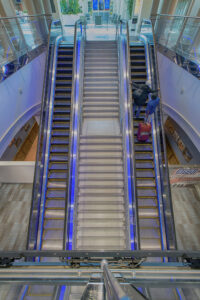
The third phase was undeniably noticeable to passengers—replacement of the existing escalators in 2021. These escalators
were installed in the 1990s and had an estimated 15- to 20-year life expectancy. Given the level of capital expense and the operational importance of the escalators, CAE found itself in a position common across public spaces: pumping repair money into an existing system much longer than it fiscally made sense to do so.
Maintenance fees on the escalators had reached $60,000 per year and were steadily increasing. The escalators were often down, resulting in key impacts to CAE’s operations. Beyond that, customer experience was negatively impacted through rerouting during the often-lengthy repair process and the mess and barricades associated with it. In replacing the system, CAE sought to decrease maintenance costs and headaches while improving overall efficiency. The new escalators cost a total of $1.8 million and include a slow-down mode. This motion-sensor-based system decreases the speed of the escalators when not in use, bringing them back up to speed when passengers approach. An auto stop feature also improves escalator safety and eliminates reliance on the manual emergency stop in the event of an accident.
Phase Four: Solar Array
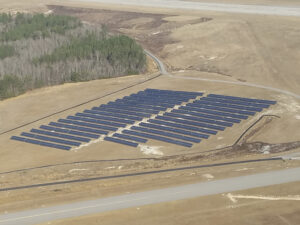
The final and marquee project of the program was installation of a 7-acre solar array with a 20-year life expectancy, beginning in 2016. Capital cost for the array was $2 million dollars The array’s energy production is roughly 1.2 MW per hour and is back metered to the grid with a rebate provided by the local power company.
Back metering results in $30,000 to $35,000 in energy credits to the airport each month. Over the course of one year, these credits yield a $500,000 annual reduction in CAE’s energy expenditures. At this rate, the airport expects to pay off the array’s capital costs within 6 years. In all, the solar array offers an estimated $6.4 million benefit to CAE. This dollar amount takes monthly utility cost reductions into account over the array’s expected life beyond the capital expenditure repayment period.
The Final Tally
The result of CAE’s long-range improvement plan is significant downward trending of the energy costs seen between 2016 and 2021. Total costs are now in the $780,000 per year range—which is an average savings of $400,000 per year compared to previous figures. This includes cost reductions associated with improvements and retrofits to the mechanical and lighting systems, as well as back metered energy from the solar array.
Seasonal swings in energy cost are also smaller and more predictable than they were prior to the improvements, fluctuating between $55,000 and $75,000 per month. This is down from $90,000 to $120,000 previously. It is worth noting that both overall monthly costs and seasonal variability are now lower.
CAE’s improvements offer operational and environmental sustainability benefits. From an operational standpoint, sustainability is found through cost savings. Because CAE is no longer required to budget for high-dollar repairs to antiquated systems, it has funds available for other maintenance items and additional improvements that further increase the airport’s efficiency. Subsequent improvements to efficiency, in turn, free up still more funds—in a positive circle with airport operations at its center.
From an environmental perspective, the airport’s new systems have a smaller carbon footprint. Airports often struggle with green initiatives because the biggest consumers of energy and producers of emissions on the airfield are outside their control—the planes and other equipment owned by the airlines. By improving the pieces within its control, CAE is actively engaging in environmental stewardship.
Moving Forward
Current maintenance costs for the new systems are low in comparison to upkeep on the old systems; barring unforeseen changes in CAE’s operations or increases in energy costs at the provider level, these numbers are expected to remain stable for some time. Thanks to the success of this initiative, the airport is planning for additional cost and energy saving projects down the road.
Lower operation and maintenance costs put CAE in a position to improve service to passengers as time goes on. Decreased costs mean less expense passed on to the airlines, making the airport more competitive in terms of securing additional air service and other tenants. Increased air services make CAE more appealing to passengers than other airports in the catchment area.
This case shows the true impact of careful airport planning. CAE’s efforts to improve operational efficiency have created positive ripples that reach the airport’s stakeholders, the neighboring community, and the environment. These efforts have also set the airport on a path that makes ongoing improvements easier and more effective.
Markets: Airports
Services: Aviation Services

